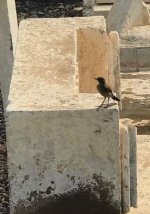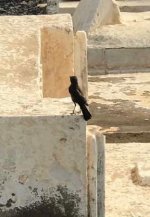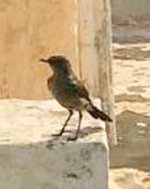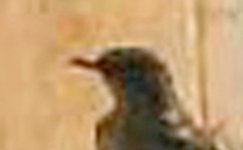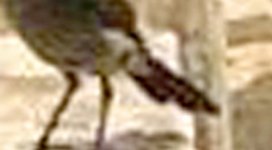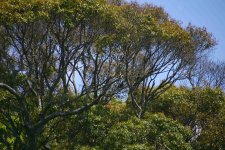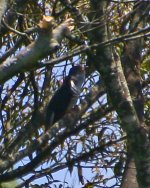I snapped them with a phone b/c it was what I had with me at the time.
This isn't aimed at you, John, but it would be useful if people posting 'not so good' photos would say in the first post that it was taken with a phone, or a 60x Olympus point-and-shoot, or whatever because the judgement of people who try to help will be different. Maybe along with the request to give a location for posts, BF could request people to say if the photos were taken with a phone or point-and-shoot?
For example, if my Canon 70D DSLR with the Canon 100-300 lens (or even my Tamron 18-400) showed a yellow bill even in a very distant shot, it would be because the bill was yellow at least to some extent; or if it showed flecks on the chest it would be because there were flecks on the chest.
But my iPod camera (I don't have an actual smartphone on which the cameras are presumably a bit better) is fine for a souvenir shot of a meal out with my wife, or for a casual broad scenic shot, neither of which are ever going to be printed, but even on my 27" computer screen the photos look pretty poor.
I attach an example: a Lesser Cuckoo taken near my house last week (the first I've ever taken of this bird sitting, as opposed to blurred flying photos). The lens was the Tamron 18-400 (so not even a Canon lens) at full 400 zoom on my Canon 70D (not their best DSLR either); and handheld. My friends with 800mm lenses and tripods that cost more than my own whole camera+lens would have been able to get National Geographic photos here, but I prefer to have a light setup and walk around, enjoy the exercise and get whatever photos I can for my own pleasure.
(Free publicity: this Tamron lens is obviously not as great as a much heavier real Canon lens, but if you might want to take wide scene shots and zoom shots on the same walk without the time to change lenses, for example, or for some other reason (I have a hand injury which makes the weight of the full 70-300 sometimes painful - the Tamron is 300g less), it's fantastic, and the vibration control even at 400 is astonishing.)
The bird is 22-27cm. But the colours that you can see are still fairly reliable; notice the yellow on the bill. But with my iPod camera, even assuming the bird was the same size relative to the iPod sensor as it was to my cameras sensor (i.e. a lot closer than this cuckoo), I wouldn't trust it much at all.
I assumed that John's original photos were like the cuckoo crop I have attached, and therefore that the colours could be trusted to a significant degree (e.g. the 'yellow bill').
I think a lot of people even with expensive cameras and lenses don't understand how the camera makes a photo from the data it collects. People think that if the number of advertised pixels is the same, then the quality must be the same. They think that for each 'pixel' on the final output, there must be one 'pixel' on the sensor in the camera. But that's not true. The camera sensor has red, green, blue sensing points (not in equal numbers) and the software makes a photo from the data these point collect. And there will be a lot more pixels in the photo than there are sensing points on the sensor. And just because the final number of pixels is the same doesn't mean that the number of sensing points on the sensor, or the sensor size, were the same . And even with the same sensor and the same software, the bigger the lens, the more light that comes in (under control, of course), the better the digital photo will be, even if the number of pixels is 'the same'.
It's true that smartphone photos are incredible considering the size of the lens (especially if, like me, you are old enough, and were in younger days poor enough, that a few dozen Kodak Instamatic snaps are all you have to remind you of the first 25 years of your life). But they are not as magic as they seem in many, or most situations.
I was astonished when I went to Malaysian Borneo a few years ago to find that everyone else who used a camera (some didn't; they just wanted to look which is fine, of course) was using an iPhone. Many BF members will know how difficult it is to take reasonable photos in a rainforest with good equipment. Indeed, a couple of people on this trip asked me to send photos to them via e-mail because they could see that their own photos were pointless.
And I remember another time when someone was trying to take photos of leaping dolphins from a moving boat in choppy water with an iPad!
Anyway John Tully, I think Blackstart is it (well done Carery).





